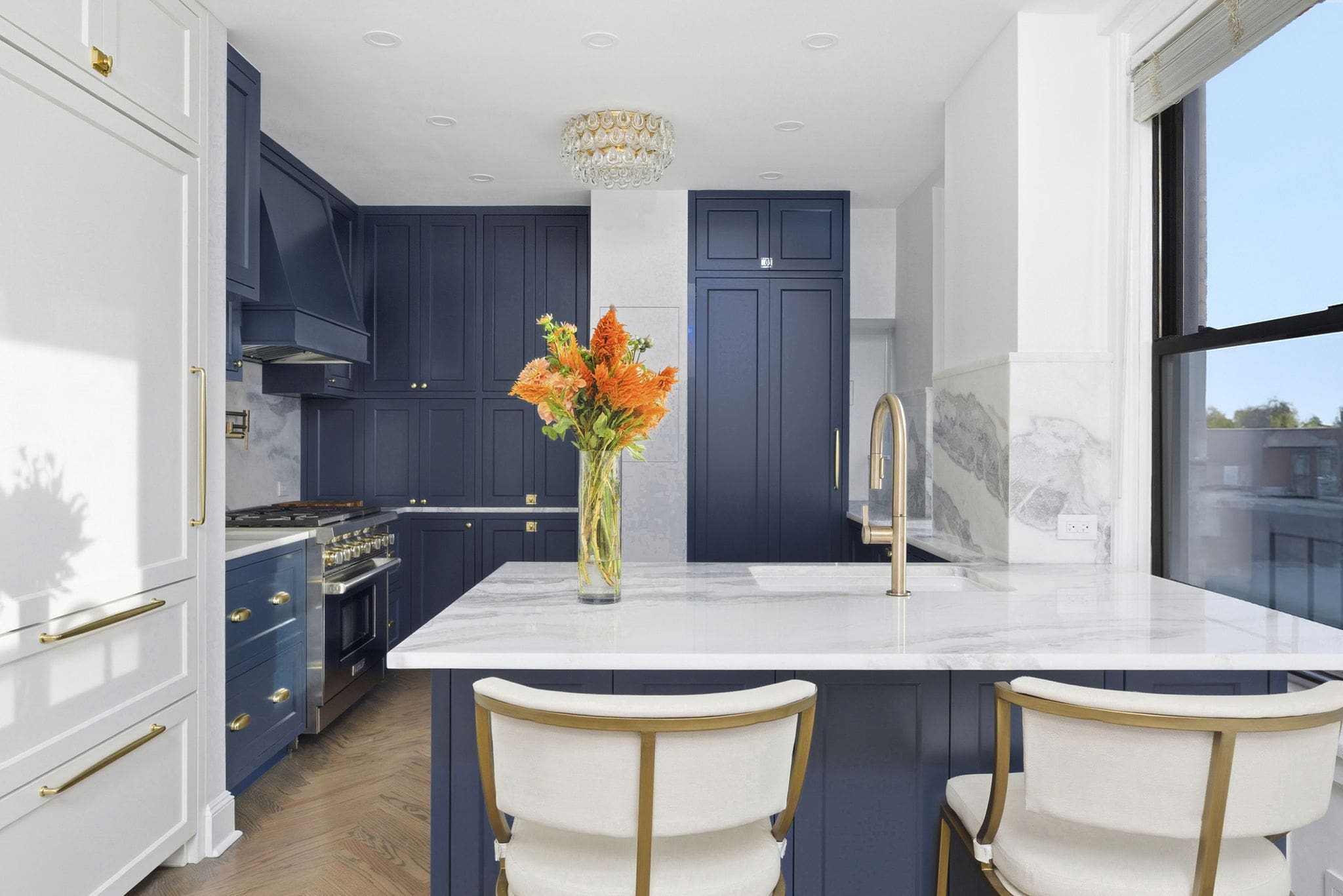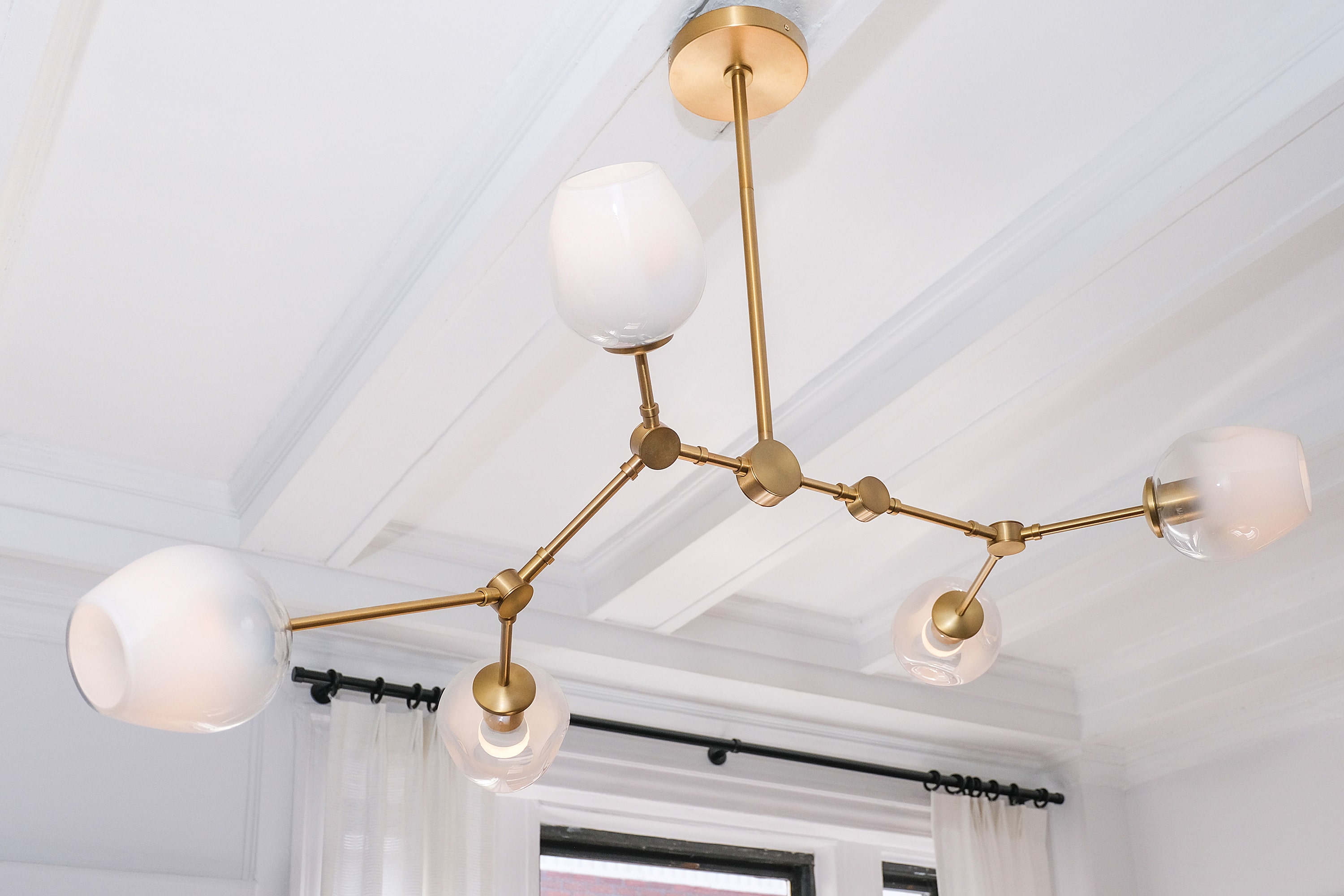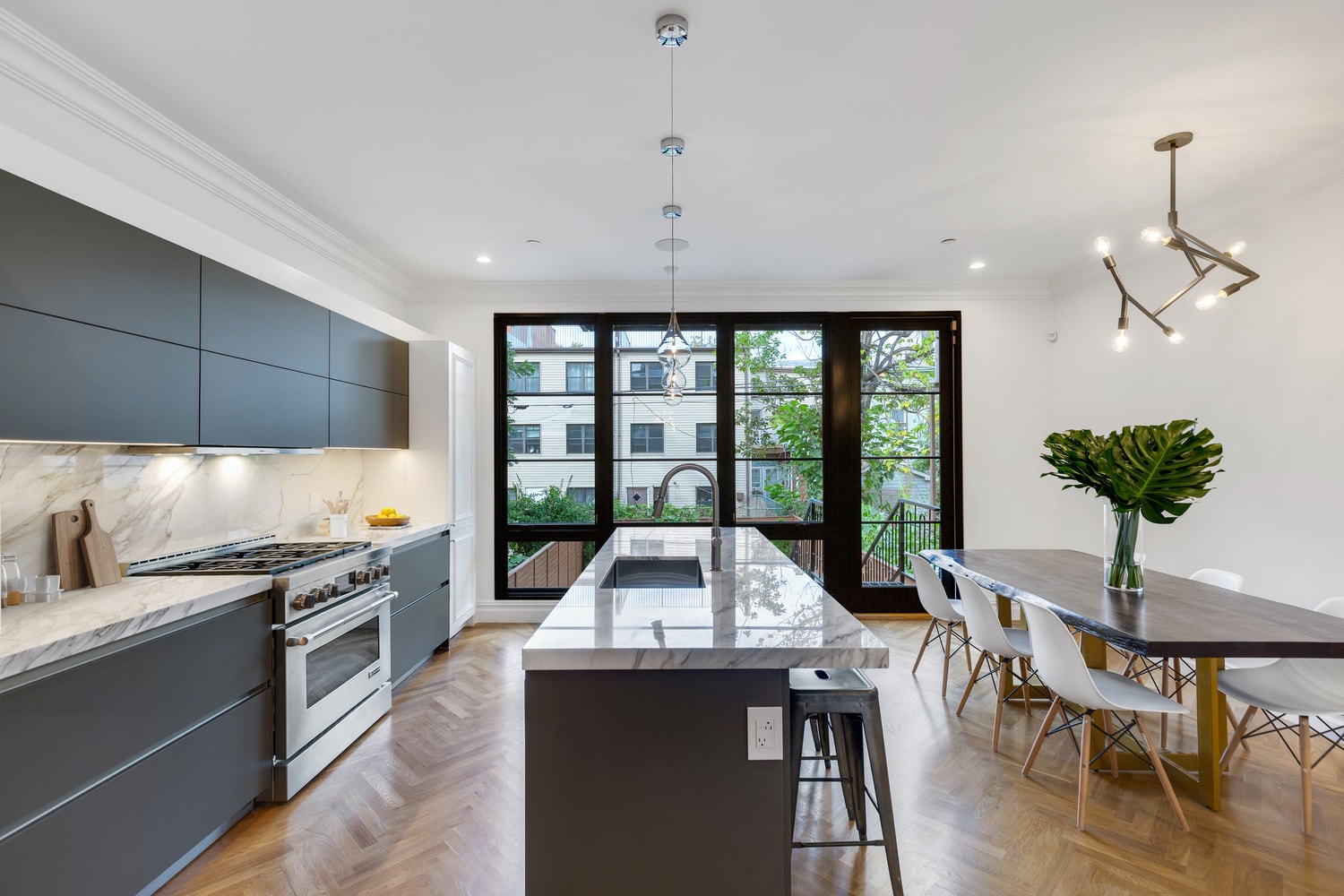In-Depth Co-Op Board Approval Process For Complex NYC Renovations: What to Expect
Learn what NYC co-op boards require for major renovations, how the approval process works, and how Gallery helps clients navigate permits and reviews.
October 22, 2025
|

In-Depth Co-Op Board Approval Process For Complex NYC Renovations: What to Expect
Planning a sizable co-op renovation in NYC? Understanding how boards review and approve major projects is key to avoiding costly delays.
Table of contents
- What’s Needed For Co-Op Board Approval In NYC
- What Does A Co-Op Approval Process In NYC Actually Look Like?
- Where Approvals Gets Complex: Real Examples From Our NYC Co-Op Renovations
With so much potential to make your mark in the world’s most storied city, planning a renovation in NYC is always exciting. But, in all fairness, the process is also challenging, especially when extensive renovation plans are in order (IE: floor plan adjustments, full apartment rewiring, or full home gut renovations). The more complex the plan and larger the square footage, the more complicated and stressful the project can become. This especially the case in co-ops, where board approvals and existing conditions determine whether your renovation sees smooth sailing or months of delays.
The challenge is that every building has unique rules, a reviewing engineer, and ever-evolving standards. Even when there’s precedent for a certain type of work, approvals aren’t guaranteed. The co-op approval process involves much more than paperwork and calls for anticipating objections, coordinating across layers of oversight, and developing creative solutions when restrictions conflict - all of which require experience in large-scale renovations.
In this article, we’ll outline what NYC co-op boards typically require for extensive renovations, how the review unfolds, where things often get complicated, and examples of how we’ve helped clients move through the process successfully.
.jpg)
[#1]What’s Needed For Co-Op Board Approval In NYC[#1]
With co-op renovations, approvals hinge on documentation. Boards want assurance that your project won’t compromise the building’s structure, safety, long-term integrity, or open the building to liability. The type of documentation required depends on the scope of your renovation. Some items are standard no matter what, while others come into play only with more extensive projects.
Typical Documentation
Before a board begins to review the details of a renovation, a baseline set of documents is required. These are the essentials that every project must include to get approval moving, no matter the size of renovation.
Alteration Agreements
Every co-op renovation in NYC begins with the building’s alteration agreement. This document outlines what is and isn’t allowed, from noise restrictions and working hours to insurance requirements and approval timelines.
Architectural Drawings
Significant renovations won’t get approved simply based on words and tech specs. Boards require detailed drawings that illustrate the proposed scope of work. These show not only the design intent but also how the renovation interacts with the building’s structure, systems, and code requirements. Without precise drawings, reviews can stall out or get rejected altogether.
Scope Of Work
A written SOW supplements the drawings by specifying what the project entails, whether that means moving walls, adding HVAC, or upgrading finishes. Boards want this clear as possible so they can quickly understand the extent of disruption and changes being proposed.
Insurance Certificates
In NYC co-ops, paperwork is power. Before a single tool comes out the belt, boards require proof of coverage, including general liability, workers’ comp, and often an umbrella policy for good measure. Moreso, with New York’s complex labor laws, buildings inherently want to confirm that your contractors have insurance extends coverage to the unique labor laws in New York. Coverage Without those certificates in hand, even the smallest SOW is DOA.
Specialized Requirements
Depending on scope significance, co-op boards require specialized documentation of proposed pieces of your renovation plan. Those specialty requirements may include:
Electrical Load Letters
When a renovation involves new electrical fixtures or HVAC systems, boards require a load letter from a licensed electrical engineer. This document confirms the total amperage required and verifies whether the existing electrical service can handle the proposed upgrades. This documentation is critical in older pre-war buildings with limited electrical capacity.
MEP Plans
For any project adding or modifying mechanical systems, detailed MEP and HVAC plans are a must. These plans outline the equipment type, placement, and BTU ratings, as well as how drainage and ventilation will be managed. Many boards also require noise plans to verify minimal disturbance to neighboring units.
Landmark Approvals
If the building is within a designated historic district, any exterior or visible window modifications must receive approval from the Landmarks Preservation Commission (LPC). This process adds review time and may restrict materials or finishes to ensure historic continuity.
FDNY Considerations
Projects that impact fire safety (IE: new ductwork, sprinklers, or rooftop mechanical units) require review for FDNY compliance. These documents confirm that all fire suppression, exhaust, and emergency access systems meet code. Coordination with both building management and the Department of Buildings is often needed to finalize these approvals.
Keep In Mind: Even if something was approved in a prior renovation, that does not guarantee re-approval. Updated codes, management policies, or city regulations may apply.
MIN.jpg)
[#2]What Does A Co-Op Approval Process In NYC Actually Look Like?[#2]
By now, you can clearly see NYC co-op renovation approvals involve more than a single sign-off. Here’s how the process usually unfolds, from submission to final approval.
Step 1: Submission to Building Management
Every project starts with a formal submission package that includes drawings, insurance certificates, and alteration agreements. Management reviews the materials first to confirm everything is complete and compliant before forwarding them to the board’s consultants.
Step 2: Engineer or Architect Review
The board’s architect or engineer then reviews the plans for structural integrity, building impact, and compliance with regulations. This is where questions and design adjustments may occur.
Step 3: Clarifications and Revisions
After the first review, the board’s consultants usually request clarifications or revisions. These may involve updates to drawings, materials, or mechanical layouts. Each round requires another submission and another review cycle.
Step 4: Specialty Reviews
For more complex projects, additional specialists are brought in. Electrical engineers confirm load capacity, mechanical consultants assess HVAC performance, and structural engineers verify wall changes or support requirements. Every specialist adds another step in the approval process.
Step 5: Final Board Decision
Once reviews are complete, the board votes on the project. Even when approved, conditions often apply. These typically include soundproofing, restricted work hours, or mandatory supervision during construction.

[#3]Where Approvals Gets Complex: Real Examples From Our NYC Co-Op Renovations[#3]
While highlighting the nuances of approvals and spelling out the process is helpful in setting expectations for your co-op renovation in NYC, hearing first-hand stories from real job sites is often the best way to truly understand how complicated approvals can become. The following two Gallery projects show how approval requirements can quickly compound in scope, and why having a full-service renovation partner is essential for navigating them efficiently and keeping design goals intact.
Example 1: Tribeca Condo Renovation | 39 Worth Street
We originally proposed placing HVAC condensing units along the rear wall of this 2,125 SF condo, following precedent from the unit below, which had a similar setup approved during a previous renovation. However, building management’s reviewing engineer has since ruled exterior installations are no longer permitted, meaning no wall cutouts, no mounting to the rear façade, and no exterior penetrations of any kind.
This left us limited options for HVAC installation. Still, creative problem-solving always finds a way forward. The most viable path became a roof-mounted system. Even then, that path presented additional challenges, including; coordinating with an upcoming roof replacement within the next year, complying with FDNY regulations for rooftop mechanical equipment, and addressing landmark and building restrictions simultaneously. Navigating these competing requirements required careful coordination with the building engineer and management to identify an approved solution.
In the end, navigating these layered restrictions is where experience truly shows value, combining creativity, compliance, and design integrity to keep projects with complex approvals moving forward.
Example 2: Classic Seven Condo Renovation | 170 E 79th
As part of the building submission for our Upper East Side condo renovation at 170 East 79th, an electrical load letter was required. The issue was that each unit received only 80 amps of service, yet the client needed HVAC. Upgrading the electrical service wasn’t feasible because the upgrade would have required scaffolding across 13 floors, with an estimated cost of more than $100,000.
To stay within the existing capacity and general budget, we had to strategically design the systems to operate under 80 amps. That meant specifying a gas dryer, a gas single-fuel range, and carefully selecting PTECH units with lower BTU and electrical demands.
Because of how tight the load calculations were, the project also required a secondary review by a specialized electrical engineer. This included providing detailed voltage drop calculations (accounting for wire length to the meter, temperature range, and wire type), all conducted in parallel with the building’s standard review process.
Key Takeaway: Approvals aren’t just “yes/no” — they involve negotiation, redesign, and deep technical coordination.

How We Help Our Clients Navigate Co-Op Approvals
Getting a significant renovation approved in NYC means more than exceptional design. Far from. Getting your renovation over the hump takes expert strategy surrounding the process and varied experience navigating the abundance of red tape. From understanding what boards look for to managing the back and forth with building engineers, our full-service team at Gallery has decades of experience keeping projects moving without losing momentum. Here is how we make that happen:
Experience
Years of navigating NYC co-op approvals have taught us what boards and engineers tend to flag before they ever see the drawings. Whether we’re faced with electrical load limits, structural questions, or drainage routing for HVAC systems, we anticipate concerns early and design accordingly, so revisions are minimized once review begins.
Relationships
We’ve developed working rapport with many management companies, building architects, and co-op boards across Manhattan. These relationships help set expectations upfront and often prevent the kind of last-minute confusion that can stall approvals. Knowing how a building operates internally is often as valuable as knowing the specs.
Creativity
When constraints are strict, creative problem-solving makes all the difference. We’ve redesigned systems to fit within outdated electrical limits, developed hybrid HVAC setups where full upgrades weren’t allowed, and adjusted mechanical layouts to avoid impacting landmarked exteriors. Smart design amidst boundaries is where true craftsmanship shines.
Documentation
Approvals hinge on confidence. We deliver detailed documentation that answers the board’s questions before they’re asked, spelling out everything from load calculations, engineering letters, product data sheets, and clear construction notes. The goal is to show our work in a way that leaves no room for guessing.
Patience + Persistence
Even with perfect plans and precedence in the building, NYC approvals can require multiple rounds of review. Staying calm, organized, and responsive through rounds of iterations is part of the job. Thankfully for clients, our process is persistent and includes tracking every comment, coordinating with consultants, all in effort to keep the project moving toward approval while never stalling out.
Closing Notes On Approvals For Complex Co-Op Renovations In NYC
Extensive renovations in New York City will always come with layers of review, rounds of revision, and moments of uncertainty. That’s simply part of the process when working within the city’s most iconic and complex buildings. But with the right partner, that process becomes far less daunting. At Gallery, our experience navigating approvals, anticipating engineering hurdles, and balancing board requirements with design intent means even the most demanding renovations remain within reach. The path may be intricate, but with strategy, patience, and expertise, we help our clients manage the minutia with ease.
Considering an extensive co-op renovation in NYC with strict board approvals or engineering constraints? Feel free to contact us and discover how Gallery’s all-inclusive design-build process streamlines every step of your project, from drawings to final approvals, so your renovation moves forward smoothly.
We are an award-winning design-build firm in New York City with a full-service approach to residential renovations in Manhattan and Brooklyn that includes everything from interior design and architecture services to filing permits and construction. We’re experts in renovating pre-war homes, kitchens, bathrooms, flooring, sourcing custom pieces, building entirely new rooms, millwork, and all that falls in between. Let Gallery bring your dream home to life.

.png)
.png)





.jpg)

%20(2).jpg)


.jpg)
%20Gallery%20KBNY.JPG)


